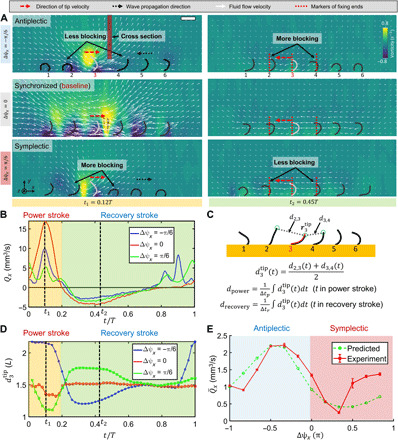Fig. 3. Local fluid flow modulated by the time-varying boundaries of artificial cilia arrays with different metachronal waves.

(A) Experimentally observed fluid flow distribution of representative artificial cilia arrays with antiplectic, synchronized, and symplectic waves (). The cilia in an array with antiplectic waves have less blocked local fluid flow from their neighbors during the power stroke, while more blocked local fluid flow during the recovery stroke, compared with the cases with symplectic waves. (B) Time-varying volume flow rate Qx passing through the cross section marked in (A) within a full period. (C) Metrics for quantifying time-varying boundary conditions, using the average intercilium tip distances within the power (dpower) and recovery (drecovery) strokes. (D) The time-varying intercilium tip distances of cilium no. 3 () in representative arrays (). The small variation of in the synchronized case is caused by imperfect synchronization due to fabrication errors. (E) Experimental data of and its predicted value. . p = 0.25 is a fitting variable. Error bars indicate SDs for n = 4 cilia (index, 2 to 5). In all experiments, glycerol (dynamic viscosity, 0.876 Pa·s) is used. B(t): f = 2.5 Hz and Bm = 40 mT. Scale bar, 1 mm.
